#Best time to visit tanzania
Text
Tanzania Family Holiday - Get the Best Family Safari Holidays in Africa

Exploring Tanzania's vibrant landscapes and diverse wildlife with loved ones is a cherished dream for many. A Tanzania Family Holiday lets you live this dream, offering the perfect setting to introduce the majestic Tanzanian wildlife to your family, creating memories to last a lifetime. With our Tanzania Safari Tours, you will witness nature's wonders and get a chance to engage with local tribes and experience authentic Tanzanian culture.
Tanzania Family Safari Trip Highlights
Tanzania is a playground for wildlife enthusiasts and nature lovers. Here are some highlights to anticipate on your Tanzania Family Holiday:
Experience the vastness and beauty of the Serengeti National Park, home to the iconic wildebeest migration.
Dive into the depths of Ngorongoro Crater, the world's largest intact volcanic caldera, teeming with wildlife.
Witness majestic elephants at Tarangire National Park.
Witness the unique spectacle of tree-climbing lions at Lake Manyara National Park.
Relax with your loved ones, surrounded by Zanzibar's pristine beaches and turquoise waters.
Where To Go on A Tanzania Family Safari Holiday?




While there are countless Tanzania Safari Destinations, some stand out for family trips:
Serengeti National Park
Marvel at the sheer number of animals, including the famous wildebeest migration, lions, zebras, and more.
Tarangire National Park
The place is renowned for its large elephant population and iconic baobab trees.
Ngorongoro Crater
This natural wonder is home to over 25,000 animal species. With its high concentration of wildlife, spotting your favorite animals is a breeze.
Lake Manyara National Park
It’s a hidden gem known for its tree-climbing lions and vast flocks of flamingos.
Zanzibar
After the excitement of the safari, relax on Zanzibar's white sandy beaches, enjoying the Indian Ocean's clear blue waters.
How Much Does a Tanzania Family Safari Cost?
Tanzania Safari Costs might vary depending on accommodation types and group sizes. For instance, a family of 4 to 6 members might start at $855, while 2 to 3 members could start at $1,500. Typical inclusions in Tanzania Family Safari Packages:
Airport transfers in a private vehicle
Transport and wildlife drives in modified 4WD vehicles with special features
Professional English-speaking safari guide services
All wildlife reserve entry fees
Game drives in various national parks
Domestic flight transfers, like from Serengeti to Zanzibar
Zanzibar Accommodation
When To Go on A Tanzania Family Holiday?
Tanzania boasts a relatively mild climate, making it an excellent year-round destination. However, for an optimal safari experience, consider visiting between January to March or June to October. The dry months from July to October are particularly recommended for family holidays.
Tanzania Family Safari Activities
From game drives to cultural experiences, Tanzania has it all:
Engage in thrilling game drives across various Tanzania Safari Destinations.
Observe nearby wildlife, including lions, elephants, cheetahs, and rhinos.
Enjoy cultural interactions with local tribes.
Relish the serene beaches of Zanzibar with activities like snorkelling, kite-surfing, and dhow sailing.
Tanzania Family Safari Accommodations
Our Tanzania Safari Packages offer a range of accommodations to cater to different preferences:
Luxury lodges with modern amenities.
Tented camps for an authentic safari feel.
Basic camping for adventurous souls.
Comfortable accommodations in both Moshi/Arusha and Zanzibar.
Our Tanzania Family Safari Itinerary
Our safari packages are designed with families in mind and offer unforgettable experiences, from wildlife encounters to beach relaxation. Here is a short glimpse of the itinerary for our Tanzania Family Safari Packages:
Arrival at Kilimanjaro International Airport and transfer to Moshi/Arusha.
Explore Tarangire National Park, home to large elephant populations.
Discover Lake Manyara National Park and Ngorongoro Conservation Area.
Experience the vastness of the Ngorongoro Crater.
Traverse the iconic Serengeti National Park with its plethora of wildlife.
Soak in the beauty and culture of Zanzibar for four days.
Departure from Zanzibar International Airport.
Start Planning Your Family Safari Trip in Tanzania
With a myriad of experiences awaiting, a Tanzania Family Holiday promises exciting adventures and cherished moments with loved ones. Start planning to create memories that will be treasured for years. Our carefully crafted tours assure you of a holistic Tanzania Family Vacation experience.
0 notes
Text
Explore The Best Time to Visit Tanzania With Our Travel Experts

Planning a trip to Tanzania? And wondering what time of the year is the Best Time to Visit Tanzania? Tanzania is great to visit almost any time of the year.
But when is the Best Time of The Year to Visit Tanzania? Well, the answer depends on your interests and the experiences you seek. In this post, we’ll break it down month by month to help you plan the perfect Safari In Tanzania.
Tanzania is an all-year destination. However, from June to October (the dry season) is usually the best time to visit. This is because the foliage is less thick and it is easier to spot wildlife. The Great Wildebeest Migration is in Tanzania (Serengeti) for 8 months of the year, and usually, the best time to see it is in June – July. If you wish to see the calving season, January to early March is the best time to visit (Ndutu area).
Month By Month Guide To Travelling In Tanzania
June to October – Dry Season: These are the Best Month For Tanzania Safari to see the wildebeest migration
August to September is the best time to see the wildebeest river crossings in northern Serengeti. Animals are easier to spot since they concentrate around waterholes and rivers
January-February is the time to see the calving in the southern Serengeti, and an excellent time to see predator action
March to May is the peak of the Wet season. Wildlife viewing in Tarangire, Katavi, Selous, and Ruaha is better during the Dry season
Now that you know When the Best Time to Visit Tanzania is, it’s time to plan your dream safari or cultural adventure. If you’re passionate about preserving this stunning natural beauty for future generations and want to make a positive impact on the environment and local communities, consider booking your trip with Sumbi Extra Miles Safari.
So start planning your amazing Tanzania Safari Vacations with today! We provide the best customized and tailored packages and Tanzania Travel Guide which suits your needs and interests to make your trip successful.
#Best Time of The Year to Visit Tanzania#Safari In Tanzania#Best Time to Visit Tanzania#Tanzania Safari Vacations
0 notes
Text
Choosing the Perfect Time: Best Seasons to Experience Tanzania with Rena Tours
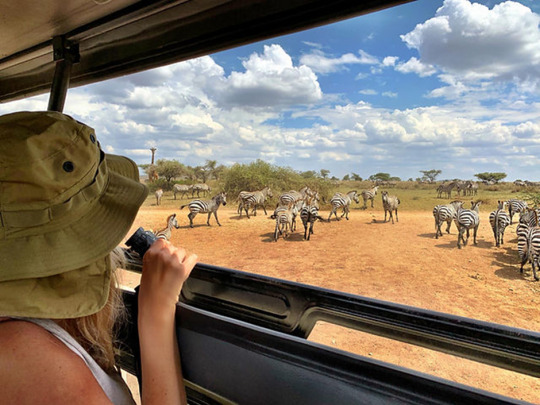
The Best Time to Visit Tanzania depends largely on the type of activities you're interested in, as the country's diverse landscapes and climates offer unique experiences throughout the year.
For wildlife enthusiasts, the optimal time to visit is during the dry season, from late June to October. This period coincides with the Great Migration in the Serengeti, where millions of wildebeest, zebras, and other animals move in a spectacular mass across the plains. The dry season is also ideal for visiting the Ngorongoro Crater and other national parks, as animals gather around water sources, making them easier to spot. The weather is generally sunny and warm, with cooler nights, especially in higher altitudes.
If you’re planning to Climb Mount Kilimanjaro, the best times are during the dry seasons, either from late June to October or from January to early March. These months provide more stable weather conditions, making the ascent safer and more enjoyable.
Beach lovers should consider visiting Tanzania from December to March, when the weather is hot and humid, perfect for enjoying the beautiful beaches of Zanzibar and the mainland coast. This period is also excellent for diving and snorkeling, as the waters are clear and calm.
For bird watchers, the wet season from November to May is ideal. This period sees the arrival of migratory birds and lush landscapes, although it’s worth noting that some remote areas may be less accessible due to rainfall.
While Tanzania Safari Tours offers year-round attractions, the best times to visit for wildlife viewing are during the dry seasons, beach holidays are ideal from December to March, and bird watching is best during the rainy season. Rena Tours specializes in crafting personalized itineraries to maximize your experience based on these optimal times, ensuring you get the most out of your visit to Tanzania.
0 notes
Text
April in Tanzania: Unveiling Nature's Splendor on Safari

April in Tanzania, Tanzania transforms into a safari paradise as the short rains subside, giving rise to lush greenery that blankets the landscapes. It's a time of unparalleled beauty and wildlife spectacle, especially in the iconic Serengeti, where the Great Migration's river crossings unfold. Thousands of wildebeests and zebras brave crocodile-infested waters in a dramatic display of nature's raw power.
April is a unique time for birdwatchers, with many migratory birds making Tanzania their temporary home. With comfortable temperatures and expanding vegetation, a Safari in Tanzania in April offers an optimal setting for immersion into the country's natural grandness. Exploring the Serengeti and Ngorongoro Crater on Safari Vacations In Tanzania is a dream come true for wildlife enthusiasts.
Venturing beyond the Serengeti unveils the rugged beauty of Tanzania's southern circuit national parks. Katavi boasts vast buffalo herds and remote wilderness, ideal for those seeking a rugged adventure. Meanwhile, Ruaha's diverse ecosystems and remarkable wildlife encounters captivate explorers with its untamed landscapes.
April beckons adventurers with a promise of exploration and discovery, making it a strong contender for the Best Time to Visit Tanzania. Whether witnessing awe-inspiring wildlife events or delving into remote wilderness, April invites visitors to experience Tanzania's natural wonders in all their glory. Conservation Caravan Safaris offer an opportunity to engage in responsible tourism practices while enjoying the breathtaking landscapes and wildlife of Tanzania.
#April in Tanzania#Safari in Tanzania in April#Safari Vacations In Tanzania#Best Time to Visit Tanzania
0 notes
Text
Which Is The Best Time To Visit Tanzania For A Safari Adventure?

Exploring on a safari adventure in Tanzania is a dream for many wildlife enthusiasts, and timing is key to ensuring a truly mesmerizing experience. The East African country boasts a diverse range of landscapes and ecosystems, making it crucial to pick the right season for your safari. Let's explore the Best Time To Visit Tanzania for an unforgettable safari adventure.
1. Dry Season (June to October):
The dry season is widely as the Best Time For Safari In Tanzania. Running from June to October, this period offers clear skies, low humidity, and sparse vegetation, making it easier to spot wildlife. The animals tend to gather around water sources, providing excellent opportunities for game viewing. The famous Serengeti National Park hosts the Great Migration during this season, where millions of wildebeest and other herbivores move in search of greener pastures, attracting predators in tow.
2. Shoulder Seasons (November and May):
The months of November and May mark the transitional periods between the wet and dry seasons. While there may be occasional rain, the landscapes are lush and green, and the crowds are thinner compared to the peak season. This can be an ideal time for budget-conscious travelers who want to avoid the high tourist volume. Wildlife is still abundant, and the scenery is stunning, making it a great compromise between the wet and dry seasons.
3. Wet Season (March to May):
The wet season, also known as the "green season," occurs from March to May. While the rainfall can make some roads impassable and lead to temporary closures of certain areas, it's a magical time for bird enthusiasts and photographers. The vegetation is at its most vibrant, and many animals give birth during this period. Some lodges offer discounted rates, making it an attractive option for those seeking a more budget-friendly safari.
The Great Migration Show:
If witnessing one of the greatest natural spectacles on Earth is on your bucket list, plan your visit between June and September. This is when the Great Wildebeest Migration occurs in the Serengeti National Park, as millions of wildebeest and other animals cross the plains in search of fresh grazing land. The dramatic river crossings are a sight to behold and offer unparalleled opportunities for wildlife enthusiasts and photographers.
The Tanzania Safari Tours offerings are a year-round spectacle, each season unveiling different facets of its natural beauty. Join with Galago Expeditions and Plan your safari carefully with choosing the Best Time To Visit Tanzania for a safari adventure depends on your preferences and priorities., taking into account the unique features of each season, and get ready to explore on a journey filled with breathtaking wildlife encounters and unforgettable moments in the heart of East Africa.
0 notes
Text
The Best Time to Embark on an Unforgettable Tanzanian Adventure
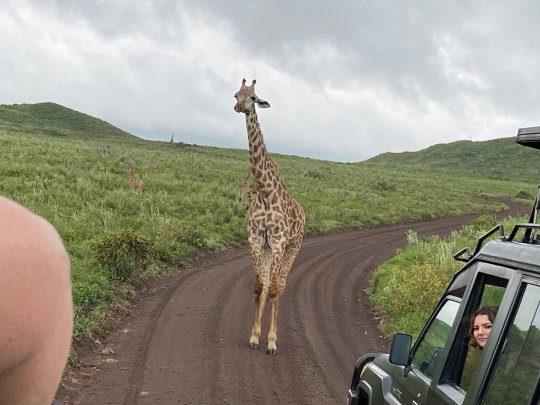
Tanzania, a land of diverse landscapes and abundant wildlife, offers a magical experience for travellers seeking a memorable African adventure. Choosing the Best Time To Visit Tanzania is crucial to ensure you witness its natural wonders at their finest. In this guide, we'll explore the different seasons in Tanzania and help you discover the Best Time Of Year To Safari In Tanzania to plan your safari or climb the majestic Mount Kilimanjaro.
1. Dry Season (May to October)
The dry season is considered the best time to visit Tanzania, offering favorable conditions for wildlife safaris and outdoor activities. From May to October, the weather is generally dry and cool, providing comfortable temperatures during the day and chilly nights. This season marks the Great Migration in Serengeti, as millions of wildebeest, zebras, and other herbivores move in search of water and fresh grazing lands, attracting predators in their wake. Witnessing this incredible spectacle is a once-in-a-lifetime experience.
The dry season also presents an excellent time for mountain climbing, particularly for ascending Mount Kilimanjaro. The clear skies offer breathtaking views, and the dry trails make the trek safer and more manageable. It's essential to book accommodations and tours well in advance, as this period attracts a considerable number of tourists.
2. Wet Season (November to April)
The wet season in Tanzania, from November to April, is characterized by occasional heavy rains. While this season might not be the ideal time for safari adventures, it brings its own unique charm to the country. The landscapes transform into lush greenery, and many animals give birth during this time, leading to an abundance of young wildlife.
In the southern and western parts of Tanzania, such as the Selous Game Reserve and Katavi National Park, the wet season offers fantastic opportunities for birdwatching, as migratory birds arrive in large numbers. Additionally, this period sees fewer tourists, providing a more exclusive and tranquil experience.
However, it's essential to note that some roads might become impassable due to flooding, and certain remote areas might be inaccessible during heavy rains. Despite this, the wet season can still be a rewarding time to visit Tanzania if you're interested in birdlife and can tolerate occasional showers.
3. Shoulder Seasons (April to May and November)
The transitional months of April to May and November are considered the shoulder seasons, marking the periods between the wet and dry seasons. During these months, tourism is at its lowest, and accommodations often offer discounted rates. While there is a higher chance of rainfall during these periods, it can vary from year to year. Travellers who prefer quieter experiences and are willing to take a bit of a risk with the weather might find these months suitable for your best Tanzania Experience.
Conclusion
Choosing the Best Time To Visit Tanzania largely depends on your preferences and interests. If you seek the thrill of witnessing the Great Migration and exploring Tanzania's wildlife in its natural habitats, the dry season is ideal. On the other hand, the wet season offers its own unique rewards for travellers seeking a more exclusive experience. Whether you're a wildlife enthusiast or an adventurer set to conquer Mount Kilimanjaro, Tanzania Safari Holidays promises an unforgettable journey in every season.
#Best Time To Visit Tanzania#Tanzania Safari Holidays#Tanzania Experience#Best Time Of Year To Safari In Tanzania
1 note
·
View note
Text
Family safari packages » are intended to give extraordinary encounters to all ages. These agendas consolidate untamed life seeing with instructive exercises, guaranteeing that each relative can partake in the experience.
0 notes
Text
Exploring Tanzania's Wildlife Paradise During the Kenya Migration Season
Every year, Tanzania's vast plains become the stage for one of nature's most dramatic events: the Kenya Migration Season. This awe-inspiring spectacle sees millions of wildebeest, zebras, and other wildlife traverse the Serengeti in search of greener pastures, making it a prime time to witness the raw beauty of Africa's wildlife. Join us on a journey through Tanzania's wildlife paradise during this remarkable season.
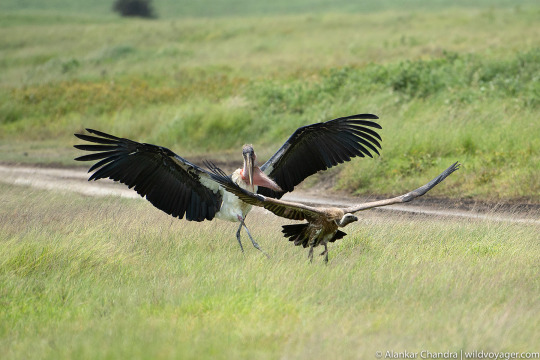
1. The Great Migration:
The Kenya Migration Season is a phenomenon like no other, as over two million wildebeest, zebras, and gazelles move in a circular pattern between Tanzania's Serengeti and Kenya's Maasai Mara. Witnessing this mass movement of animals is a once-in-a-lifetime experience that showcases the true power of nature.
2. Prime Wildlife Viewing:
During the Kenya Migration Season, Tanzania's national parks and reserves, especially the Serengeti, offer unparalleled opportunities for wildlife viewing. The herds attract predators such as lions, leopards, and cheetahs, providing visitors with the chance to witness thrilling predator-prey interactions.
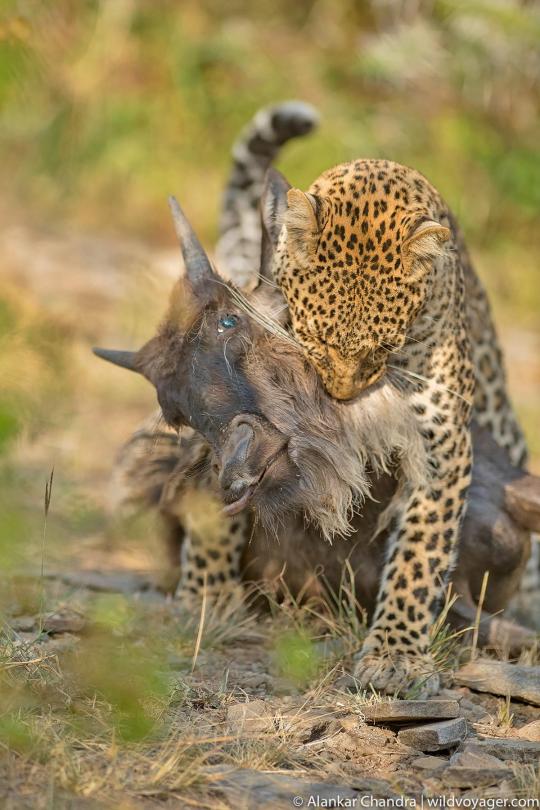
3. Bird-Watching Paradise:
A part of the iconic mammals, Tanzania's Kenya Migration Season is also a paradise for bird watchers. The wetlands and grasslands teem with a variety of bird species, making it a haven for bird enthusiasts looking to spot rare and colorful species.
4. Serengeti Hot Air Balloon Safaris:
One of the best ways to experience the Kenya Migration Season is from the sky. Hot air balloon safaris over the Serengeti offer a bird's-eye view of the vast herds below, as well as panoramic vistas of the savannah and its inhabitants.
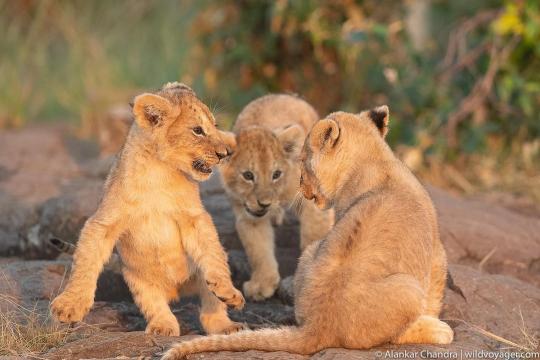
5. Cultural Experiences:
Tanzania's wildlife is not the only attraction during the Kenya Migration Season. Visitors can also immerse themselves in the rich Maasai culture by visiting local villages and participating in traditional ceremonies, providing a deeper understanding of the region's heritage.
Contact To Wild Voyager (Best Trip Planner)
6. Sustainable Tourism Practices:
As the Kenya Migration Season attracts a large number of tourists, it is crucial to practice sustainable tourism to protect the fragile ecosystem. Responsible tour operators ensure that visitors leave only footprints and contribute to the conservation of Tanzania's wildlife.
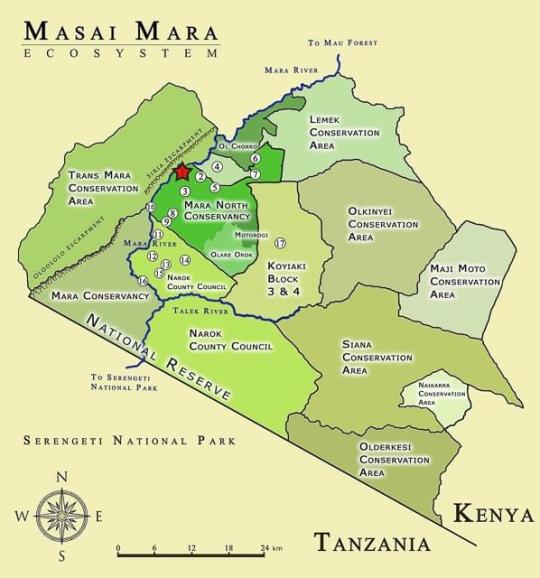
7. Accommodation Options:
Tanzania offers a range of accommodation options, from luxury lodges to tented camps, ensuring that visitors can experience the Kenya Migration Season in comfort and style. Many lodges and camps are located within or near national parks, providing easy access to wildlife.
8. Conservation Efforts:
Tanzania has made significant efforts to conserve its wildlife and habitats, particularly during the Kenya Migration Season. Conservation initiatives, such as anti-poaching patrols and community-based conservation projects, play a crucial role in preserving the natural environment for future generations to enjoy.

9. Photography Opportunities:
The Kenya Migration Season is a paradise for photographers, offering stunning landscapes and close-up shots of wildlife. Whether you're a professional photographer or a novice, Tanzania's wildlife paradise provides endless opportunities to capture breathtaking moments.
10. Off-the-Beaten-Path Adventures:
While the Kenya Migration Season attracts a large number of tourists, there are still plenty of opportunities to explore off-the-beaten-path areas. Guided walking safaris and night drives offer a different perspective of Tanzania's wildlife, away from the crowds.
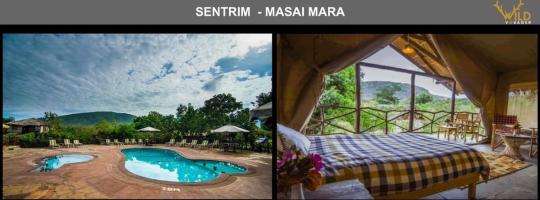
11. Climate and Weather:
The Kenya Migration Season in Tanzania Experience occurs during the dry season, from June to October when the weather is cooler and drier. This makes it an ideal time to visit, as wildlife congregates around water sources, making them easier to spot.
12. Planning Your Visit:
To make the most of your Kenya Migration Season experience in Tanzania, it's essential to plan. Book your accommodation and safari tours well in advance, as this is a popular time to visit. Consider combining your safari with other activities, such as hot air balloon safaris or cultural tours, to enhance your experience.
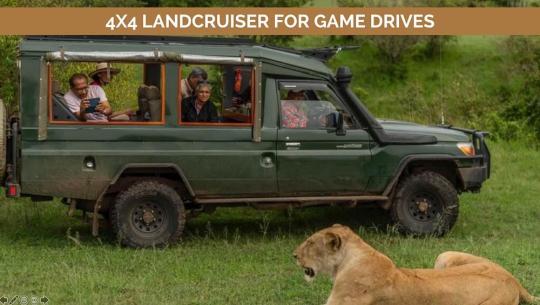
13. The Magic of Tanzania's Wildlife Paradise:
The Kenya Migration Season in Tanzania is a magical time when the plains come alive with the sights and sounds of millions of animals on the move. Whether you're a wildlife enthusiast, a nature lover, or simply seeking adventure, Tanzania's wildlife paradise offers something truly special during this remarkable season.
Conclusion :
Exploring Tanzania's wildlife paradise during the Kenya Migration Season is an experience like no other. From witnessing the Great Migration to immersing yourself in Maasai culture, Tanzania offers a wealth of experiences that will leave you in awe of the natural world. So pack your bags, grab your camera, and get ready for the adventure of a lifetime in Tanzania's wildlife paradise.

The Kenya Migration Season in Tanzania is a testament to the beauty and diversity of Africa's wildlife. By exploring Tanzania's wildlife paradise during this remarkable season, visitors can witness nature at its most raw and untamed, creating memories that will last a lifetime.
Read More - Best Time to Visit Masai Mara
0 notes
Text
Planning Your Safari: The Best Times to Explore Masai Mara
Embark on the ultimate African adventure by planning your safari to Masai Mara at the perfect time. Discover the best times to explore this iconic destination, known for its stunning wildlife and breathtaking landscapes. Whether you're a wildlife enthusiast or a nature lover, Masai Mara offers an unforgettable experience year-round. The best times to visit Masai Mara are during the Great Migration, typically from July to October, when millions of wildebeest, zebras, and other animals cross the Mara River in search of greener pastures. This spectacle is a must-see for any safari-goer.
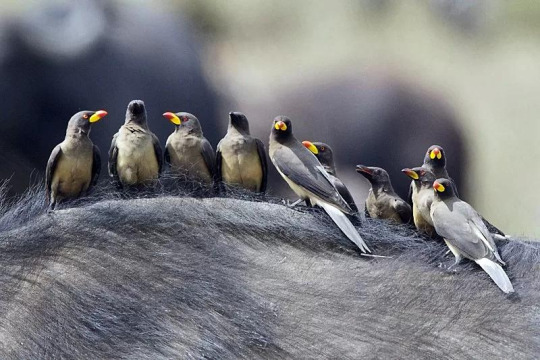
1 note
·
View note
Note
it's kinda interesting to me that you never remember barbados. one of my friends is from barbados which makes it one of the more significant countries to me, so i'll never forget it in a world map or armericas map. yeah i just think it's interesting which 'obscure' countries some people always remember or forget
oh 100%. for me i always remember angola because a kid from there came to visit our class once. same with tanzania, one of my friends in primary school lived there for some years, so i could pick it out on a blind map every time.
there's a lot of 'obscure' countries a lot of people forget about because it's not relevant to them, but at the same time it means home to hundreds of thousands, and for many others it's "my best friend is from there :)" or "i visited on vacation and it was the best time in my life" or a hundred other small things. and idk man just thinking about it fills me with a sense of wonder. i ❤️ the world.
#and i know hungary is the obscure country for many people lol#but yeah it's personally very important to me to know at least a little bit about every country#i could meet someone from barbados any time. i should know where it is at the very least#i just don't wanna be ignorant about any place that means the world to someone else if you get it
8 notes
·
View notes
Text
Crossover Universe - Gepardia Town Lore
I have to say it was a bit of a chore to describe the town/city, but I enjoyed it I confess. Although I feel like it's not quite perfect as always.
The important thing I have to say is that visuals are concepts, because I have no idea exactly what this town and coat of arms should look like yet. Should there be something missing or you've got some idea, feel free to tell me. 😊
Enjoy! (⌒_⌒;)
Concept Coat of arms:

(made in Armoria by Azgaar)
About the town:
Population: around 4000, but the number is gradually increasing
Area: 20.43 km2 (square kilometres) | 7.89 sq mi
Highest Elevation: 131 m | 429.79 ft
Racial diversity: The most common races are humans and night elves, who make up nearly three-quarters of the city's population. In smaller numbers are trolls, dwarves, gnomes, orcs, taurens and several others.
History: A few residents from the capital, Ashte'quel, decided to leave and find a new home in the southeast as the city began to become overpopulated. A small group wandered through Wildebeest's Plains, struggling to survive. They were fleeing from lions, hyenas and occasionally theropod dinosaurs and finding water in the barren savannah was difficult.
One night a giant cheetah (Acinonyx pardinensis) came to their camp, and amazingly, unlike the other predators, it was friendly to the travelers and guided them to their new home. It helped them find water, food and safe places to camp.
The journey took 38 days, the exhausted travelers made their way through the Cheetah's Valley to the coast where was the best soil for growing crops and they settled there. But after that the cheetah disappeared and no one ever saw it again.
Travelers mourned over it and in its honour, the Czech artist František Burian named their new home Gepardia and built the statue of that giant cheetah that still stands in the town square today. Since then, in general, the cheetah has become the sacred animal not only of Gepardia, but also of the whole island.
About 380 years later, a queen of Havaykia named Inya Lunabloom proclaimed Gepardia as a town.
Architecture: The architecture is similar from the Middle East and Africa (mainly Morocco, Kenya, Ghana and Tanzania). Thanks to these types of buildings, residents are simply protected from the great summer heat. It's mixed between medieval and modern architecture.
Culture: The culture in Gepardia is diverse since many immigrants are living there. Most of the residents are huge nature enthusiasts and educate the public about conservation. Districts and quarters of the town are named after recently extinct animals from Earth. Festivals such as the Lunar Festival, which is mainly celebrated by night elves and taurens, and the Day of Freedom, which celebrates their liberation from the wars and cruelty of their former homes and worlds.
Cuisine: It is very diverse, but some of the favourites are Asian, Italian and Slovak cuisine. The most popular dish in town is the Slovak dish: Egg-coated bread in several ways.
Religion: It's diverse, but there are mostly atheists and believers who worship Mother Nature. The Night Elves believe that Thansuokria's moon is their goddess Elune from Azeroth, who is watching them. The bodies of the deceased are cremated to ashes, which are placed into urns and placed in underground cemeteries, which some incorrectly call catacombs. In late autumn, relatives of the deceased go to visit their urn. Havaykians believe that souls are indestructible and live forever in their own afterlife world and can travel through all universes freely.
Sport: Badminton and baseball are the town's most popular sports. The National Badminton Championships are organised every year. Gepardia's most famous baseball team is called the Swift Turtles, who have won the National Baseball Three-Week Tournament four times, which is played every three years in the late spring.
Transport: There are no cars in Havaykia, instead there are animals like horses, sabercats and dinosaurs that are suitable for traveling on land. They either are mounted or they pull carriages. In the town they walk on foot or take the train, which has tracks above the ground to avoid accidents. The seas are traveled by boats and ships (obviously). The newest added transport is the subway, which resides underground of the island and travels quickly and safely to distant towns and cities. There is no cost for transportation at all.
Criminality: Although Gepardia has the lowest crime rate on the island, there are still issues. Alcohol, cigarettes and similar drugs are very limited and gambling is strictly illegal in Gepardia. The guardians of the town are called Sentinels, who mostly solve problems like good cops without violence, but are still armed Kaldorei soldiers. Unfortunately since the Assassins and Templars got into Gepardia and the Sentinels were replaced by the Templar Knights, the crime rate has gradually increased as the two factions fight each other there. The prisoners are taken into the capital, where the prison is guarded by the Wardens.
Other informations:
The financial currency in Havaykia are cooper, silver and gold coins.
In general Havaykia and Gepardia strive to enable inhabitants to live a healthy and happy life.
Politicians and civilians are legally equal, and if a politician has extremist views at the polls, they are immediately voted out.
Healthcare is not paid, most doctors work for the passion of helping others, but of course they are paid by the government as long as they do an excellent job.
The maximum working time is 6 hours and 4 people per 24 hours. Taxes and insurance are paid only once a year and surprisingly it is not expensive. Wealthy residents have a so-called financial limit for example they can have a maximum of 100,000 golds and the extra is donated to poorer households and charities. This prevents unemployment and homelessness.
Ads don't exist at all in Havaykia because it's annoying for everyone.
Map and additional information:

Made on Medieval Fantasy City Generator by Watabou
Xerces Blue Butterfly Wood: Meadow park, which is named after an earth-extinct species of blue butterfly. Mostly it is a resting place for locals and tourists, but during the holidays there are festivals.
Nightjar Market District: Named after a small nocturnal bird that just happens to be common on the Earth, but some believe the district is actually named after a critically endangered (potentially extinct) species of nightjar called the Jamaican poorwill (Siphonorhis americana). This is a popular place to shop in the town, where farmers and traders sell their quality goods. There is also an assassin bureau where Altaïr and Malik work.
Thylacine District: Named after the extinct carnivorous marsupial. Although it is the smallest district of the town, the richest residents live there. The isolated building in the south of town was once an orphanage, which later moved into Giant Gecko Quarter. Badminton tournaments will be played in the southern part of the district.
Passenger Pigeon Park: A forest park where there are actually huge flocks of passenger pigeons and other species of pigeons and doves.
Gepardia Fortress: Home to the Mayor and their family who is protected by walls and Sentinels. That's where the lawsuits happen. It's the oldest building in the town.
Giant Gecko Quarter: A quarter named after the largest species of extinct gecko. There are kindergarten to high school, children's hospital and later orphanage.
Golden Toad District: The largest district and named for an extinct toad. There live most of the residents and hotels and pensions for tourists. There are the best restaurants, interesting monuments and a hospital. Naya and her father Mayur are living there.
Baiji Harbour: A harbour named after a possibly extinct freshwater dolphin. Ships transport resources into and from the capital, and tourists travel here. It was at this harbor that the Assassins stepped foot on Havaykia's land for the first time.
Gepardia Museum: It's built in front of the town square and contains the University of Natural Sciences and the administration.
Map in 3D:




Made on City Viewer by Watabou
Mayor Nythelar Evensky:
"This new town is not built for money, power or rulers! But it's only built for its people!"

Nythelar Evensky was born in Falahnaar to a night elf mother and human father. Since childhood he was bullied by the other Kaldorei children since he is half elf and half human, but still he believed that he in one day change society for the better at least somewhere else.
In his early twenties, he moved to Gepardia, where he immediately fell in love with the place. Years later, as Gepardia was becoming a town, he campaigned for mayor. He promised a better future for the residents of the newly formed town, and he won the election as a result. After that he fulfilled all his promises and for that the people of Gepardia respected and loved him.
Only years later, Robert de Sablé and the Templars arrived in the town and warned the mayor of the assassins who planned to kill him and take over Gepardia, heading for a dictatorship. This made Nythelar paranoid and he had no choice but to allow the Templar's guards to patrol the town so that they could protect the civilians while the town Sentinels guarded him in the castle.
Yet he doesn't realize he made a mistake…
#it seems too fairytale-like ngl#idk if this system would really works irl#tamiisnthere's artwork#tamiisnthere's fanfic#Crossover Universe
6 notes
·
View notes
Text
Dry Season Or Wet Season- Which Is Better For Tanzania Safaris

Tanzania, with its diverse wildlife and stunning landscapes, is a dream destination for wildlife enthusiasts and adventure seekers. But when is the Best Time To Visit Tanzania?
The answer depends on whether you prefer the dry season or the wet season when choosing the best Tanzania Safari Packages. In this blog, we'll explore the advantages and considerations of both seasons to help you decide which is better for your safari experience.
Dry Season in Tanzania: June to October
youtube
The dry season, spanning from June to October, is often considered the Best Time Of The Year To Visit Tanzania due to several advantages.
Pros of the Dry Season:
Optimal Wildlife Viewing: During this period, the wildlife congregates around water sources, making it easier to spot Tanzania Wildlife.
Mild Weather: The dry season offers pleasant, cooler temperatures, which are more comfortable for outdoor Activities In Tanzania.
Less Mosquitoes: Fewer insects mean a lower risk of contracting mosquito-borne diseases like malaria.
Peak Season for Safaris: Many tourists prefer the dry season, so it's a great time to meet like-minded travelers and share your experiences.
Cons of the Dry Season:
Crowds: While the dry season is popular for Safaris In Tanzania, it also means more tourists, leading to busier national parks and accommodations. So, booking in advance is advisable.
Higher Costs: Due to the higher demand, prices for Tanzania Accommodations and tours are usually higher during the dry season.
Dry Landscapes: The once lush landscapes become parched, which may not be as visually appealing to some visitors.
The Wet Season in Tanzania: November to April
The wet season in Tanzania spans from November to April, and it offers a different, yet rewarding safari experience:
Pros of the Wet Season:
Green and Lush Landscapes: The rains bring life to the savannah, turning it into a green paradise. It's a fantastic time for photographers as landscapes burst with vibrant colors.
Baby Animals: The wet season is the calving season for many animals, including wildebeest and zebras. This means the chance to witness adorable baby animals taking their first steps.
Lower Tourist Numbers: Compared to the dry season, the Wet Season In Tanzania sees fewer tourists, allowing for a more tranquil safari experience.
Reduced Prices: Tanzania Holiday Packages are often more budget-friendly during the wet season.
Cons of the Wet Season:
Muddy and Unpredictable Roads: The rains make roads within the Tanzania National Parks and reserves muddy and less accessible. Game drives might be limited to well-maintained tracks.
Insect Activity: The wet season sees an increase in insect activity, including mosquitoes. It's essential to take precautions against malaria and insect bites.
Intermittent Rainfall: While the wet season offers lush landscapes, it also means sporadic rainfall, which can affect the timing and enjoyment of your safari activities.
Tips for Choosing the Right Season
To help you make an informed decision, here are some tips for choosing between the dry and wet seasons for your Tanzania safari:
If You Prefer the Dry Season:
Book your Tanzania Tours And Packages well in advance to secure your spot.
Be prepared for larger crowds and higher prices.
Pack light, breathable clothing and sunscreen to protect yourself from the sun.
If You Prefer the Wet Season:
Embrace the beauty of the lush landscapes and be patient when it comes to wildlife spotting.
Consider taking a birdwatching tour to make the most of the migratory species' presence.
Plan for potential rain delays and pack waterproof gear and an umbrella.
Tanzania's Safari Magic: Dry or Wet, It's Fantastic!
In a nutshell, choosing the Best Time To Visit Tanzania between the dry and wet seasons ultimately depends on your preferences and priorities. The dry season offers optimal wildlife viewing and mild weather but comes with crowds and higher costs. On the other hand, the wet season provides lush landscapes, fewer tourists, and lower costs but can be challenging for wildlife spotting.
Whichever season you choose, Tanzania promises a unique and unforgettable safari experience, rich in natural beauty and diverse wildlife. So, consider your priorities while planning your Tanzania Safari Packages, no matter what the season is.
0 notes
Text
Choosing the Best Time for a Safari in Tanzania: A Seasonal Guide to Unforgettable Wildlife Experiences


Tanzania, renowned for its breathtaking landscapes and diverse wildlife, offers an unparalleled safari experience. Choosing the Best Time to Visit Tanzania is crucial for maximizing your wildlife encounters and overall enjoyment.
The prime time for a Tanzanian safari is during the dry season, which spans from late June to October. This period coincides with the Great Migration, a spectacular natural event where millions of wildebeest, zebras, and other herbivores traverse the Serengeti National Park in search of greener pastures. The dry season also means thinner vegetation and fewer water sources, making it easier to spot animals congregating around rivers and waterholes. The weather is generally pleasant, with warm days and cooler nights, perfect for game drives and exploring the savannah.
From January to February, another excellent window for safari enthusiasts, the Serengeti’s southern plains become the calving grounds for thousands of wildebeest. This period is particularly exciting for witnessing predator-prey interactions during a Safari in Tanzania, as lions, cheetahs, and hyenas take advantage of the abundance of vulnerable newborns. The lush, green landscapes also offer stunning photographic opportunities.
While the wet season from March to May brings heavy rains and challenging road conditions, it shouldn’t be entirely dismissed. This off-peak period offers lush, vibrant scenery and fewer tourists, providing a more intimate and exclusive experience. Birdwatchers will especially appreciate the influx of migratory birds during this time.
Ultimately, the Best Time for a Safari in Tanzania depends on your preferences. Whether it’s witnessing the dramatic crossings of the Mara River during the Great Migration or enjoying the serenity of the off-peak season, Tanzania’s National Parks promise unforgettable wildlife adventures year-round.
0 notes
Text
Best Time to Visit Tanzania: Choosing Between Dry and Rainy Seasons
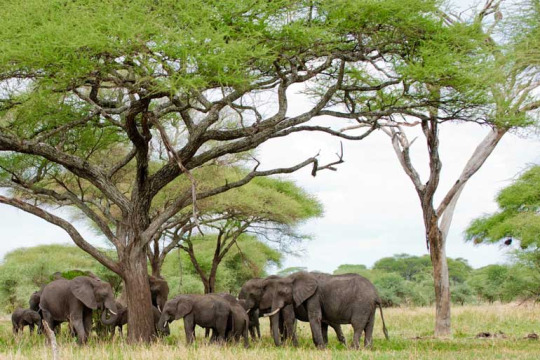
The Best Time To Visit Tanzania is during the long dry season, spanning from July to September. These months offer excellent weather conditions for various activities such as safaris, witnessing the Great Migration, and enjoying beach holidays in Zanzibar.
The Dry Season in Tanzania ensures clear skies, minimal rainfall, and comfortable temperatures, creating ideal conditions for outdoor adventures. However, it’s essential to note that these months coincide with peak travel season, resulting in higher rates and increased tourist traffic at popular destinations.
For travellers seeking a quieter Tanzania safari experience and lower rates, the short rainy season from the end of October to December can be an excellent alternative. During this period, the landscapes are lush and green following the rains, and wildlife sightings can still be rewarding. Although there may be occasional showers, they are typically brief and do not significantly impact travel plans.
In conclusion, whether you prefer the bustling atmosphere of the dry season or the quieter ambiance of the short rainy season, Tanzania Safari Tour offers unforgettable experiences year-round.
0 notes
Text
Best Time To Visit Tanzania for Wildlife Safari: A Complete Guide

Tanzania, a land of breathtaking landscapes and diverse wildlife, offers a unique adventure year-round. However, choosing the right time to visit can enhance your experience. The Best Time To Visit Tanzania largely depends on your interests and the type of safari or vacation you desire.
For wildlife enthusiasts, the dry season from June to October is ideal. During this period, the animals gather around water sources, making it easier to spot them in the popular national parks like Serengeti and Ngorongoro Crater. The Great Migration, where millions of wildebeest and zebras move across the Serengeti, occurs from June to September.
If you're a bird lover, the Tanzania Wet Season from November to May is the best time to visit. The landscapes are lush, and migratory birds flock to the country. This is also the calving season for wildebeest, providing a different yet equally fascinating wildlife experience.
For those seeking a beach holiday, the Tanzanian coastline, including Zanzibar, is best enjoyed during the dry months from June to October. Crystal-clear waters and sunny days create a perfect tropical paradise.
Keep in mind that prices may vary depending on the season, with the dry season being peak tourist season. However, visiting during the shoulder seasons of March to May and November to mid-December can offer a balance between good weather and fewer crowds.
In conclusion, Tanzania's beauty is timeless, but the Best Time To Visit Tanzania depends on your preferences. Whether you long for wildlife encounters, vibrant birdlife, or a serene beach escape, planning your Tanzania Safari Vacations according to Tanzania's seasonal variations ensures an unforgettable experience.
#Best Time To Visit Tanzania#Ngorongoro Crater#Tanzania Wet Season#Tanzania Safari Vacations#Tanzanian Safari#Serengeti National Park#Tarangire National Park
0 notes
Text

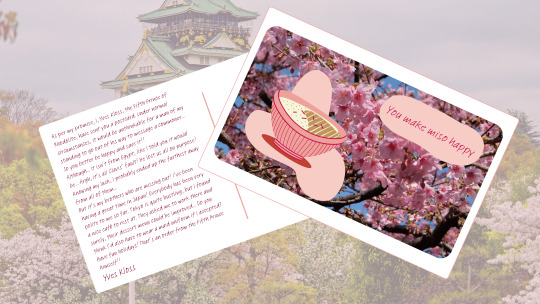


My, my, could that be that Clavis has caused some trouble again? Read on to find out!
Now, the real question is... Who else sent us postcards? Are there any connections between them? What misadventures befell them? Well, there's only one way to find out -- stay tuned!
Best wishes from the crew of IFE.
Transcriptions below the cut.
My sweetest darling,
I can almost imagine your face when you see this “postcard”, and the smile that appears on it the moment you realise I was the one who sent it. Haha, you did not expect that, did you? But rest assured, wherever I go, the only woman I think about is you. I am a gentleman, after all, and I have some heads to investigate here.
To think that you can fly now! Isn’t that delightful! Although, I must say, the flight was a bit dull. I had to entertain myself by thinking about what my brothers may be doing, ah.
Yes. I’ve lost them at the “airport”. Unthinkable, isn’t it? Hahaha, I hope their trips went as planned.
Forever yours,
Clavis Lelouch
--
As per my promise, I, Yves Kloss, the Fifth Prince of Rhodolite, have sent you a postcard. Under normal circumstances, it would be unthinkable for a man of my standing to go out of his way to message a commoner… So you better be happy and save it!!
Although… It isn’t from Egypt, like I told you it would be… Argh, it’s all Clavis’ fault! He lost us all on purpose! Knowing my luck, I probably ended up the furthest away from all of them…
But it’s my brothers who are missing out! I’ve been having a great time in Japan! Everybody has been very polite to me so far. Tokyo is quite bustling, but I found a nice café to rest at. They asked me to work there and surely, their dessert menu could be improved… Do you think I’d also have to wear a maid uniform if I accepted?
Have fun holidays! That’s an order from the Fifth Prince himself!!
Yves Kloss
--
Dear Little Rabbit,
How do you like your holidays? I must say, I felt offended on your behalf when I’ve learnt the Rhodolitian Princes left you behind. It is rather inconsiderate of them to enjoy their time while you’re lonely and defenseless, no? I shudder thinking about all the things that could happen were you to lose your way back home… Just thinking, of course.
Is the work hard on you? I can’t imagine your bookshop being particularly busy now that everybody endeavours to travel. Nonetheless, performing the same tasks, locked inside until this lovely weather is all but gone, does seem exhausting. I personally wouldn’t be able to stand it.
You’d think I’ve forgotten, but I never forget about my dear friends: thank you for your book recommendations. I did grow fond of the authors you’ve mentioned. It so happens that soon they shall visit the Royal Palace of Obsidian, so I intend to meet them personally. Should I tell them a word from you? Such opportunities are quite hard to come by, but as your ally, I’d gladly fulfil any requests you may make.
Your faithful friend,
Gil
--
You won’t believe where I am, but first things first: have you heard from Yves? I’ve lost him at the second airport. You’d think it’d be loud enough there for me to read the guide, but… You can tell what happened from there on.
That aside, you never told me how beautiful the sky is from up close! Although flying itself is so-so, the food’s like something Clavis could come up with. I ended up in Tanzania. This really is a different world, isn’t it? I don’t exactly know the local languages, but everybody’s been real nice. They even offered to take me on a trip.
I will see you soon,
Leon
PS:
Hahaha, lions ARE fast.
I’m fine.
Leon
#leon dompteur#ikepri leon#ikemen prince leon#clavis lelouch#ikepri clavis#ikemen prince clavis#yves kloss#ikepr yves#ikemen prince yves#gilbert von obsidian#ikepri gilbert#ikemen prince gilbert#ikepri#ikemen prince#ikemen series
27 notes
·
View notes